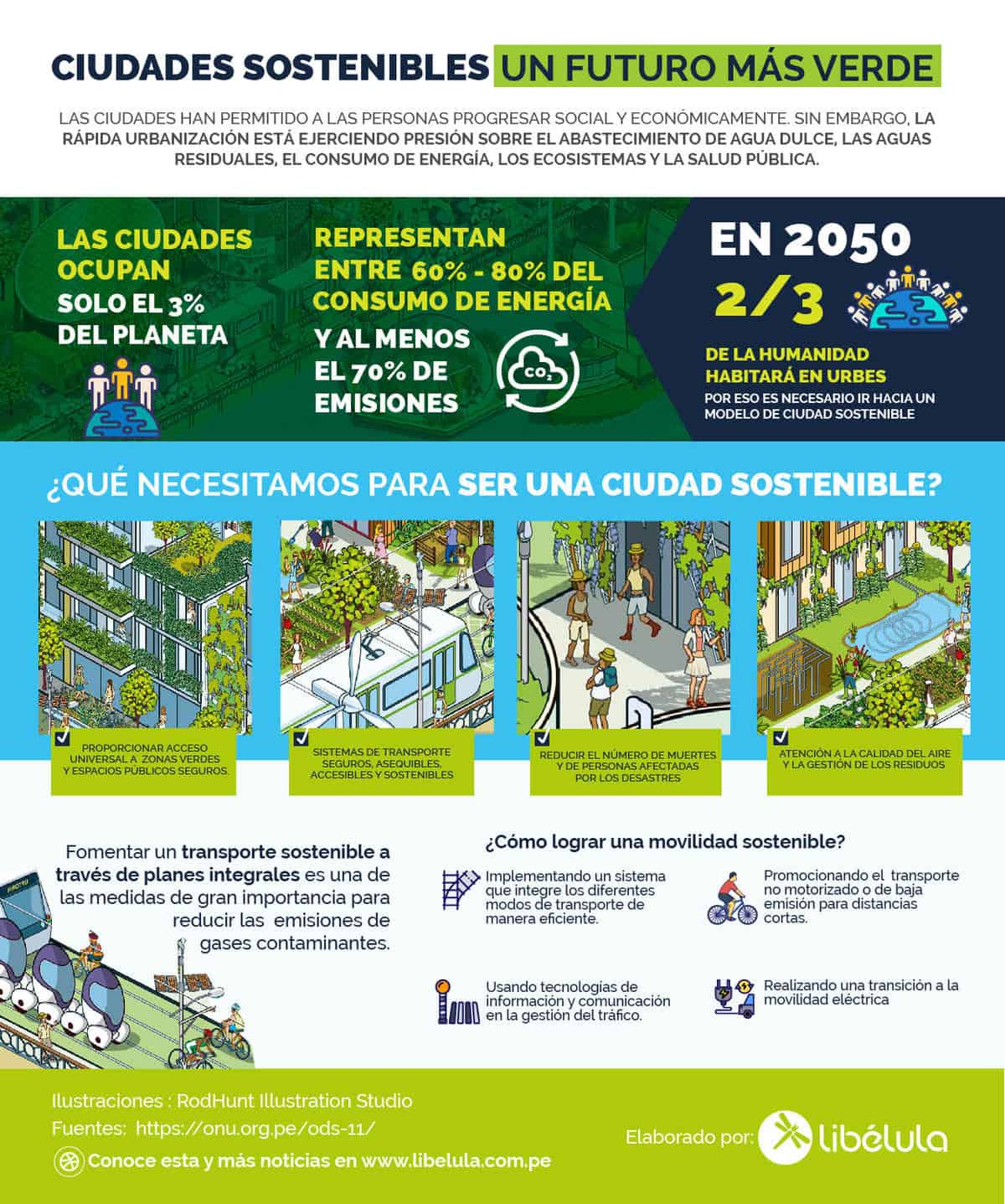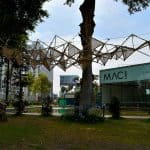Sustainable transportation for a smart city

"Lima is the second capital city in Latin America with the highest urban air pollution".
- (WHO, 2018)
In the #WorldEnvironmentDay, David García, Project Manager at Libélula reflects on cities and their impact on the environment:
What are Lima's challenges for sustainable transport?
According to the United Nations Development Program, cities occupy only 3% of the world's territory, but account for 60% to 80% of energy consumption, and at least 70% of greenhouse gas (GHG) emissions, which give rise to one of the greatest problems facing humanity in this century: climate change.
In cities, transportation is one of the largest sources of GHG emissions (in the city of Lima it is the largest*) and, at the same time, the cause of other environmental and health problems. Last year, the city of Lima was declared the second capital of Latin America with the highest level of urban air pollution by the World Health Organization. This means that there are high concentrations of polluting gases that have a negative impact on the health of the population. GHG emissions and pollutants in our city have a lot to do with the state of our vehicle fleet, the lack of an efficient integrated transportation system, the lack of traffic management, the quality of our fuels, among other aspects.
Our country, within the framework of the Paris Agreement, has committed to reduce its GHG emissions by 30% by 2030. With the transport sector being a key player in mitigating emissions, today we ask: How is the transport sector progressing in the city of Lima?
To date, our city has invested some efforts in generating solutions to mobility issues, however, its implementation has taken longer than expected: For example, Line 2 of the Lima Metro will begin operating in 2021 in its first section, being concessioned in 2014. The implementation of the next stages of the basic Metro network could take decades. There is an inertia in the adoption of solutions for the transportation sector, and at the same time, the danger of continuing to implement solutions-from-the-past such as works that are only limited to the widening of lanes, or "hard" infrastructure such as by-passes that in the long run do not end up solving anything.
On the other hand, last year we witnessed the creation of the Urban Transport Authority for Lima and Callao (ATU), which came to fruition after years of being on the table in discussions among specialists. The positive aspect is that the ATU will be able to plan, regulate and supervise the land transportation service in the capital, and will allow the city to address several problems in a more efficient and comprehensive manner, since the competencies in transportation issues have been fragmented at different levels and, to complicate matters further, distributed between two governments; that of Lima and that of Callao. The ATU will finally be able to attempt the integration of the different modes of transport: metro, buses, corridors, and non-motorized transport; managed in a systemic way.
For a city like Lima, with more than 9 million inhabitants, it is essential that the vision of the city be more strategic and comprehensive, and that it adopt technologies that can guide us towards more efficient and sustainable transportation. From the promotion of non-motorized transport (bicycles) to the use of information and communication technologies (ICT) for intelligent traffic management, as well as other less discussed aspects such as the management of freight transport within the city.
One example that is already underway is the electrification of transportation, with the implementation of the Lima Metro and some micromobility options that have been discussed a lot in recent weeks. Of course, changes are never easy, however, we have to create the conditions for such options, with tangible benefits, to be viable.
Another technology that has a huge potential to solve traffic management and GHG reduction for the medium and long term is Autonomous Vehicles (AV). Let's imagine for a second that our vehicle does not have to stop at any junction or intersection. Not only is this an exceptional improvement in travel times and emissions reduction, it would also positively impact a drastic reduction in accidents. Autonomous vehicles are not only cars, but also buses and similar vehicles that will be able to operate using this developing technology.
Finally, we should welcome the fact that the Metropolitan Municipality of Lima is implementing a Climate Action Plan within the framework of the ratification of an agreement with the C40** initiative. This seeks that cities establish a route to achieve the objectives of emission neutrality, that is, to be a zero emission city and also to achieve a city resilient to the threats of climate change, in line with the objectives of the Paris Agreement. The development of Lima's Climate Action Plan was announced in February of this year by Mayor Jorge Muñoz and it is expected that by the end of next year Lima will have this important policy instrument for the sustainable management of the city.
* GHG Inventory of the city of Lima 2012, MML.
** The Cities Climate Leadership Group, known as C40, is a group of cities that join forces to reduce carbon emissions in the atmosphere and adapt to climate change.
If you want to keep up to date with the latest sustainability news and be part of the transformational community, join the +1 community: http://masuno.global/







